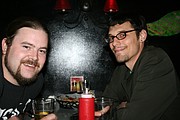OSLO, Norway (AP) - When homegrown terrorist Anders Behring Breivik launched his assault on the youth campers of Utoya Island, he expected Norway's special forces to swoop down and stop him any minute.
But Breivik was given time to kill.
The officers of Oslo's elite Delta Force drove because police don't own a transport helicopter, then were rescued by a civilian boat when their own broke down as it tried to navigate a 1-minute hop to the island. It took police more than 90 minutes to reach the gunman, who had mortally wounded 68 people. Breivik dropped his guns and surrendered, having exceeded his wildest murderous expectations.
As Oslo's police force sounded an increasingly defensive note, international experts said Tuesday that Norway's government and security forces must learn stark lessons from a massacre made worse by a lackadaisical approach to planning for terror.
"Children were being slaughtered for an hour and a half and the police should have stopped it much sooner. Even taking all the extenuating circumstances into account, it is unforgivable," said Mads Andenas, a law professor at the University of Oslo. He lost a student in the island attack while his 20-year-old niece, also at the camp, survived by hiding in bushes.
Those extenuating circumstances include the fact that Breivik preceded his one-man assault on the camp with a car bomb in the heart of Oslo's government center. Authorities were focused on helping survivors from that blast as the first frantic calls came in from campers hiding from the gunman on Utoya, northwest of Oslo.
Survivors said they struggled initially to get their panicked pleas heard and understood, because operators on emergency lines were rejecting calls not connected to the bomb. When police finally took note a gunman was shooting teens and 20-somethings on the island retreat, Breivik had already been hunting them down for a half-hour.
In a final act of bungling, police on Monday revised the island death toll down to 68, after initially miscounting the corpses at 86.
Breivik's lawyer, Geir Lippestad, said Tuesday his client was surprised he was able even to reach the island without being stopped by police, much less be free to kill for 90 minutes or more with his assault rifle and handgun.
The island's only part-time private security guard was among the first people he killed. When officers did arrive, he immediately fell prone on the ground in surrender.
Police spokesman Johan Fredriksen rebuffed journalists' questions Tuesday about the planning and equipment failures that gave Breivik untold extra minutes to kill. He called the criticisms "unworthy."
"We can take a lot, we're professional, but we are also human beings," Fredriksen said.
International experts said in coming months Norway must take a hard, cold look at a system premised on the assumption that the country didn't face a credible risk of terrorist attack, much less a back-to-back bombing and gun rampage.
That challenge could be particularly difficult in a country renowned for a culture of inspiring openness that also increases the risk of jaw-dropping security lapses.
Andrew Silke, director of terrorism studies at the University of East London, called the police response to the island attack "a bit Keystone Kops" because Norway's police were "just not used to dealing with something like this. The system was swamped."
Frank Cilluffo, director of the Homeland Security Policy Institute at George Washington University, said Norway has just been victimized by the common experience of all countries caught off guard by terror.
"Their planners suffered a major failure of imagination, to foresee that the adversary could go that far," he said. "But this is exactly what every counter-terror policy must do to be effective: to plan and train for worst-case scenarios. Because if you haven't done that before the bomb goes off or the shooting starts, then you're just improvising, and that just increases the dangers."
In Norway's case, the Delta Force squad - whose formal Norwegian name of "Beredskapstroppen" means "emergency unit" - is equipped only to travel to crises on Norway's largely two-lane road network. It took about a half-hour to cover the roughly 25-mile journey.
Police spokesman Sturla Henriksbo said Norway - a land some 1,100 miles long with around 50,000 islands alone - has only one police helicopter, based at an airport north of Oslo. And that helicopter has only four seats: two for the pilots, one for an equipment manager.
Delta Force could have used an army helicopter, but decided it would take too long to scramble one from the nearest base in Rygge, some 40 miles to the south.
So they drove, then waited for the tiny local police department to scramble its lone boat, a small rigid inflatable craft. All the while, shooting and screams could be heard from Utoya Island only 600 yards away.
Within seconds of scrambling on board, officers found themselves having to bail out the overloaded vessel. Then the engine became waterlogged and died.
"Too many policeman wanted to go too quickly to the island," explained Kgell Tvenge, commander of the police base in the nearby town of Honefoss where the boat is docked.
"But the boat didn't sink. They got a new boat from a tourist," he said.
Police say within 5 minutes of their reaching the island, Breivik was disarmed and in custody. The killer wrote beforehand he always planned to surrender as soon as police arrived, so he could publicize his extreme nationalist and anti-Muslim views in court and inspire copycat attacks elsewhere.

